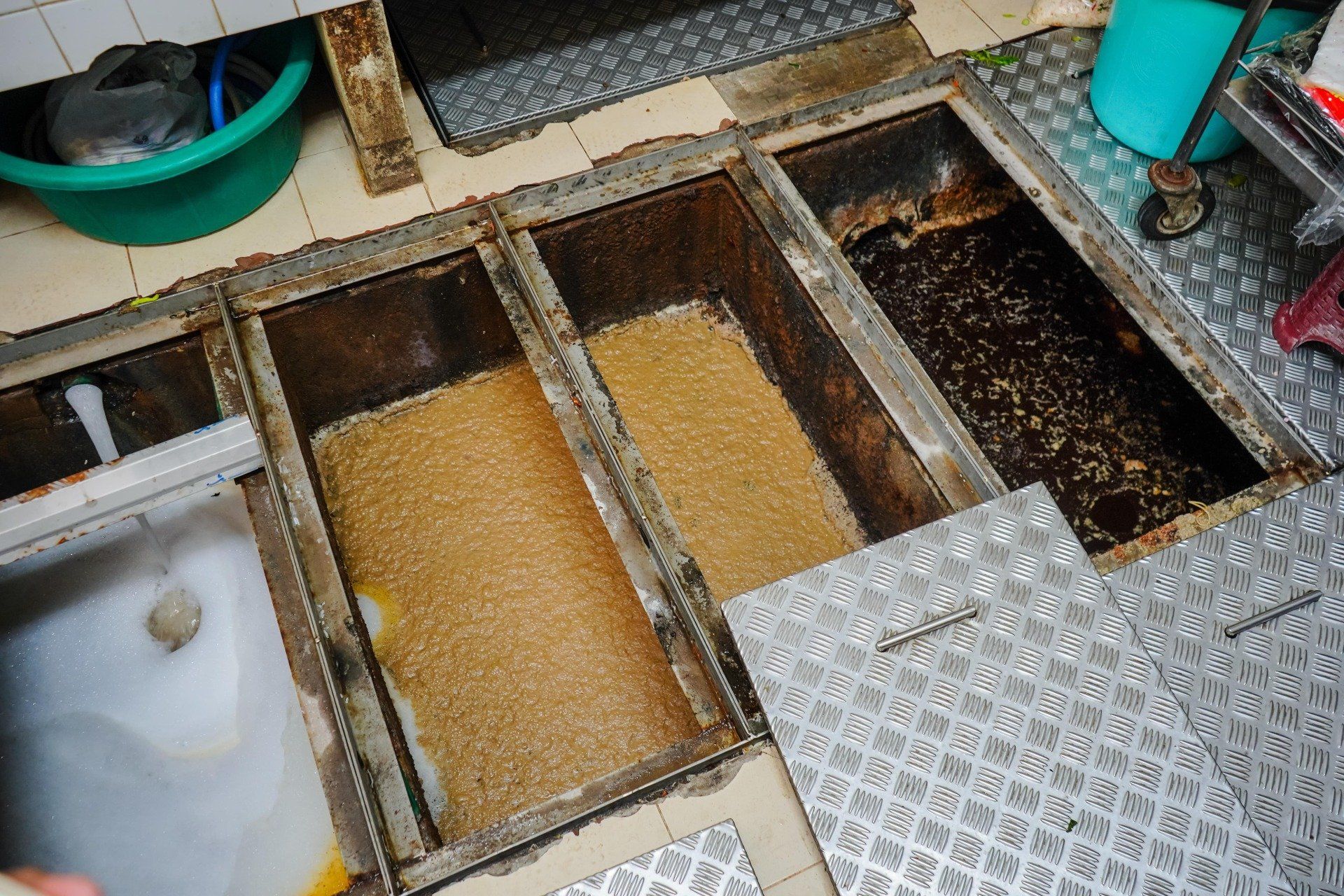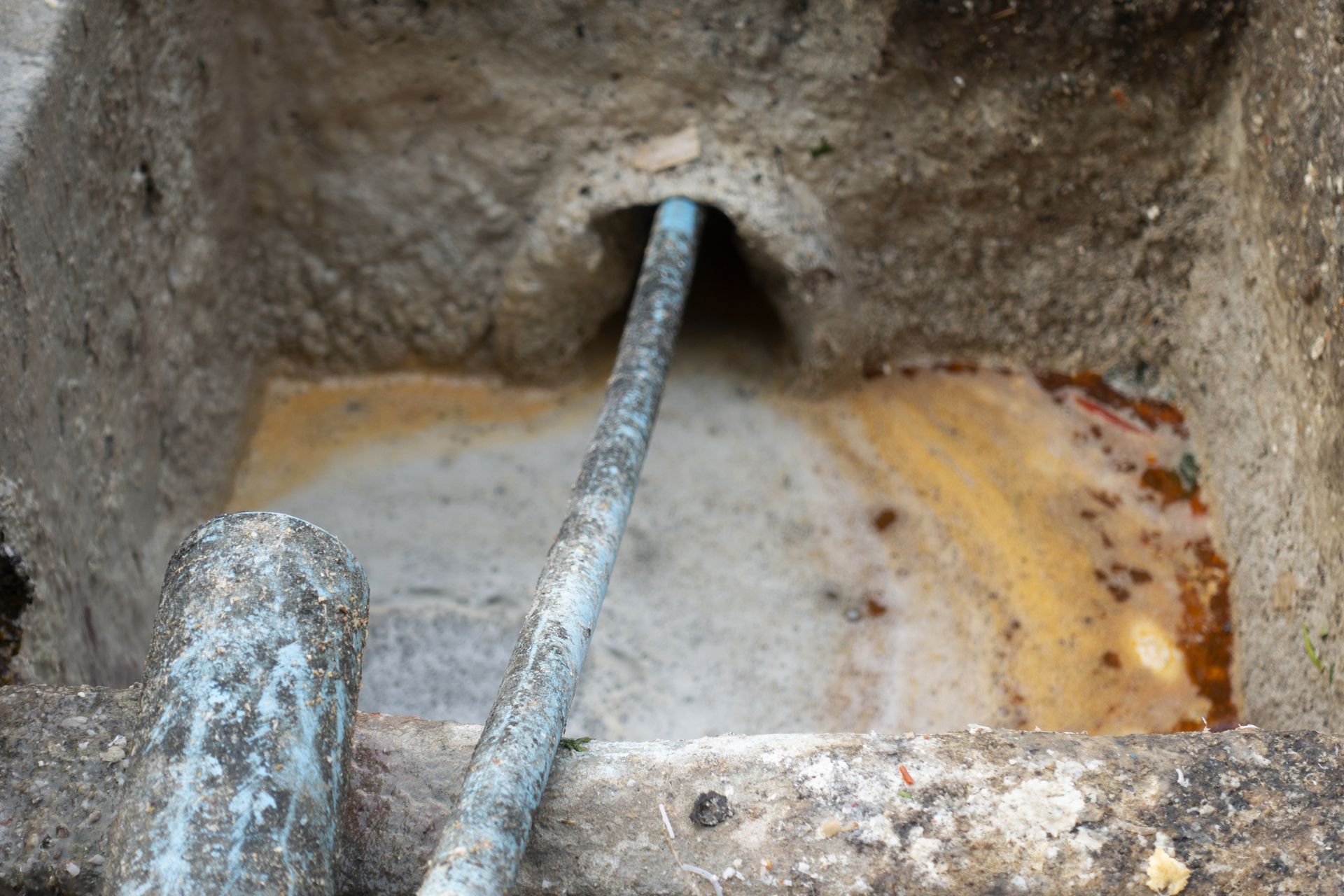Call Today for a FREE Quote
(404) 419-6887
Is It Possible to Install a Grease Trap on My Own?

Unless you’re an experienced plumber you probably won’t want to attempt to install your own grease trap. Improperly installed grease traps may allow fats, oils and grease (FOG) to escape into the sewer, where it could cause a clog.
Is Grease Trap Installation Expensive?
How expensive grease traps are really depends on the size and placement of the grease trap. A Small under-the-sink 15 gallons per minute grease trap may only cost a couple hundreds of dollars, while the large grease interceptors installed under parking lots may cost $8,000 or more to purchase and install.
Large grease interceptors that are installed outside may require excavation and a crane to lower the grease trap into the hole, after which it will likely be paved over.
If you’re currently operating an Atlanta-based food service establishment or you will be opening one soon, you may want to familiarize yourself with Grease Management Ordinance section 154-297.01. It explains grease trap regulations and rules for new grease trap installations.
The annual grease trap permit fees range from $300 for establishments with one to five grease traps to $3,600 a year for businesses with 56 to 60 grease traps. Any business with more than 60 is charged an additional $300 per five traps.
Businesses with outdoor grease traps must have two grease traps of at least 1,500 gallons for a total capacity of 3,000 gallons. Businesses that don’t have room for outside grease traps may be eligible to get special dispensation for just one 1,500-gallon trap.
Alternatively, some businesses may qualify for indoor grease traps, especially if they’re capacity is less than 100 people (which applies to many restaurants in Atlanta).
If you’re not sure what grease trap size your business needs, you may want to look at the table in section 154-297.01. For a single compartment sink that’s only 18 x 12 x 6 a grease trap would only need a drainage load of 4.2 gallons and a PDI size seven grease interceptor. A four 22 x 20 x 12 compartment sink would require a drainage load of 68.6 gallons and a PDI size 70 grease interceptor. There are a lot of potential sizes between those two extremes, so make sure the grease trap you’re having installed isn’t overpowered or underpowered for your business’s usage needs.
Alternative grease trap technologies, such as skimmers, are sometimes allowed based on the commissioner’s discretion. Food service businesses that want to use an alternative FOG management solution will need to submit a proposal to the commissioner of the Department of Watershed Management.
You should check with the city before investing in any grease trap to make sure the FOG removal system you’re installing meets the requirements for your business.
Why Shouldn’t I Just Try to Install My Own Grease Trap?
The main reasons are:
- Size of the traps
- Complexity of the plumbing to ensure proper operation
- Choosing the right trap for your needs
- Placement and connection
There aren’t many restauranteurs who are also construction experts and can personally deal with digging up a parking lot to install and connect two 1,500-gallon grease traps.
Installing indoor under-sink grease traps may be less technically difficult but you will experience a lot of plumbing and regulatory headaches if your grease trap isn’t properly installed.
Botched installations may cause sewer backups and overflows that affect not only your business but your neighbors as well, plus citations and fines. Having an appropriately sized grease trap installed is the most reliable way to avoid jeopardizing your permit.
Breakdowns of grease trap and plumbing systems can be gross and messy, and the cost of having a professional installed grease trap is often less than the plumbing problems and headaches you’ll experience down the road.
Grease Trap Cleaning and FOG Disposal
Another task that you won’t be able to handle yourself is grease trap pumping and cleaning. Grease trap service professionals use special vehicles and vacuum equipment to thoroughly clean grease traps regularly. They also take the FOG waste and water to special disposal facilities so it isn’t flushed down the sewer where it can cause blockages.
A licensed grease trap service company will also provide you with a manifest after each cleaning job. The city’s regulators will want to see these official manifests when they perform periodic grease trap inspections (which you can expect at least three times per year). If you don’t have evidence of regular professional grease trap maintenance and cleaning, you could face fines or the loss of your permit.
Southern Green Inc. is committed to making life easier for our food service clientele. We offer worry-free, reliable grease trap cleaning and waste oil recycling services throughout Atlanta and the surrounding communities. We even have our own licensed wastewater processing facility to ensure our customers never inadvertently violate FOG disposal rules.
Give us a call at (404) 419-6887 if you’d like to schedule a free grease trap cleaning quote or to schedule grease trap cleaning services.
Recent Blog Posts
Contact us Today for a FREE Quote
We are committed to making grease trap cleaning and fryer oil recycling as clean and easy as possible. If you’d like to learn more about our services or get a quote, give us a call at (404) 419-6887.
Southern Green Industries is an Atlanta owned and operated grease trap cleaning and fryer oil recycling company operating in Atlanta and throughout the entire state of Georgia.
All Rights Reserved | Southern Green Industries | Built by REV77


